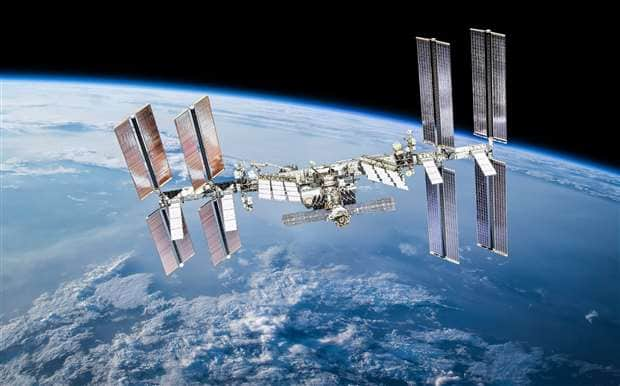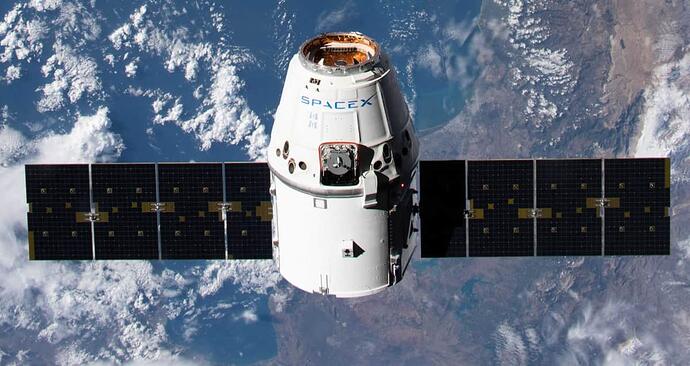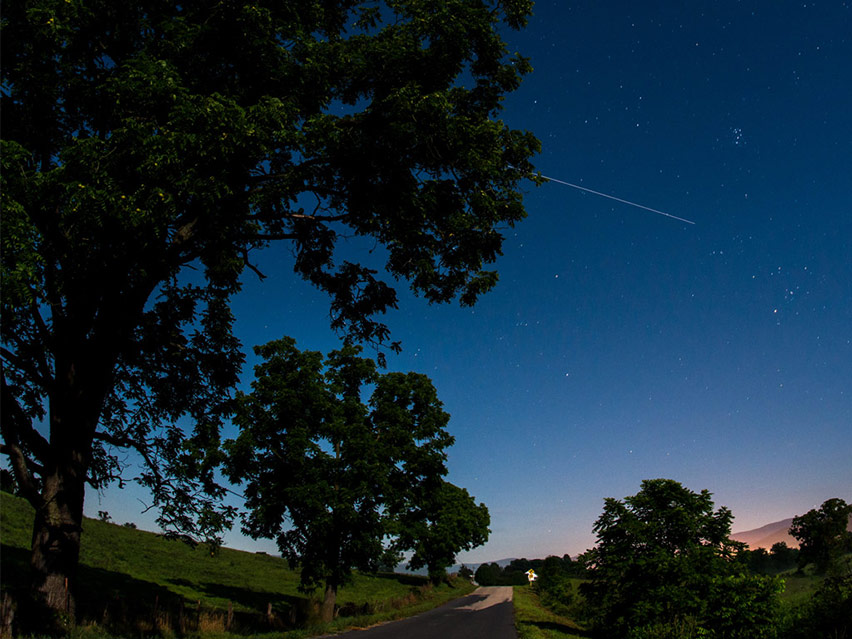Is it still up there?
Are there still people onboard ?
When/where is it visible to us earthlings?
extract from above…
Though the plan is to de-orbit the ISS in 2024, the oldest module of the station—the Russian-built and American-financed component called “Zarya,” first launched in 1998—can function until 2028 (as will The Unity, the first entirely American ISS component, which was also launched that year). Once the ISS kicks the bucket, the Russians plan to add their leftover modules to their new station, OPSEK (or Orbital Piloted Assembly and Experiment Complex)
You can actually sign up to receive alerts for the best nights to see it ST…
It’s still there:

Today
Cargo Dragon Docks to Station Monday Live on NASA TV
Current Crew:
Pyotr Dubrov
Shane Kimbrough
Megan McArthur
Thomas Pesquet
Akihiko Hoshide
Oleg Novitskiy
Mark Vande Hei
The space station looks like an airplane or a very bright star moving across the sky, except it doesn’t have flashing lights or change direction. It will also be moving considerably faster than a typical airplane (airplanes generally fly at about 600 miles per hour; the space station flies at 17,500 miles per hour).
Below is a time-lapse photo of the space station moving across the sky.
Everything you ever needed to know abut the ISS and where it is - direct from NASA
Thank you Dianne - won’t actually let me access that unless I disable my ad blocker.
Looks to me at first glance that the options are for the USA sightings alert messages…will check again though…
Thank you, Omah and Bruce - those links worked OK. Have book marked them.
signed up to test it but going to take some interest…we do have a good Telescope as well…
the following Dragon sightings are possible from Friday Aug 27, 2021 through Saturday Sep 11, 2021
Date Visible Max Height Appears Disappears Share Event
Mon Aug 30, 6:12 AM 3 min 41° 21° above W 10° above NE ![]()
![]()
Got my first reading already…thrilled at that thought…Listed as Poitiers France
ooo just seen it says 6.12 am,thought it was this evening…sure to get some more soon though…
haha must because of Brexit…Silver Tabby.hahaha
Why not - everything else seems to be! ![]()
![]()
It is still up there & still doing regular communication sessions with both radio amateurs & preplanned sessions with schools.
ARISS (Amateur Radio on the International Space Station.)
Current radio status…
https://www.ariss.org/current-status-of-iss-stations.html
List of frequencies in use.
https://issfanclub.eu/iss-frequencies/
I have spoken to them several times. And on one occasion they called a Scout Jamboree On The Air (JOTA) station which I was involved with. In general, passes give us a maximum of 10 minutes of radio time with Doppler effect changing the frequency both on approach & as it goes away. And the time we get to chat with them depends upon how high above the horizon they are.
I have always had a slightly troubling question about the ISS.
If something serious happened which threatened the integrity of the ISS, a serious form of damage that caused a rapid decompression that couldn’t be repaired for example, how long would it take to send up a number of space craft sufficient to rescue all on board?
Several years ago NASA conducted an experiment. In part, to find out if they could communicate in an extreme emergency.
They took an old Russian space suit, placed an off the shelf amateur radio handheld radio into it & connected that to a little box that would allow the handheld to send a message automatically. They then threw it out of the door. Hence the experiments name, SuitSat.
The experiment was a successful failure. The radio’s battery faded to very low energy levels very quickly due to the very cold temperatures in space. However, many of us heard it, even a day or more after it had been put into free orbit & better still, many of us heard it with very basic antennas & without shifting our receive frequency to allow for Doppler shift.
The power output was believed to have dropped to a few one thousandths of a watt, the antenna was only a few inches long & inside the space suit & the signal still made the 1200 mile journey. JUST.
I will not bore about Doppler shift. But the higher above the horizon the pass is, for us. The more Doppler shift effects the signal. I know the ISS travels at well over 17,000 mph & I would assume that SuitSat would have done the same. This means the frequency is higher than the used frequency as it approaches us & lower as it moves away.
That’s impressive. However, my concern is how quickly could a rescue mission be launched that could rescue everyone aboard the ISS at that time. I understand that routine space launches carry very limited numbers of people, though I suppose the old ‘space shuttle’ could carry quite a lot but is no longer used.
Q-spotthestation@mail.nasa.gov
Mon 30/08/2021 16:57
To:
- You
Time: Tue Aug 31 5:19 AM, Visible: 4 min, Max Height: 84°, Appears: 80° above WNW, Disappears: 10° above ENE
a little too early…maybe…
join up Silver Tabby it is worthwhile…
I completely forgot to mention my favourite (probably because it is so long since I used it):
https://www.heavens-above.com/
You can easily set your location and it not only gives the location of the ISS but also everything in the sky in real time and any time in the past or future.
Wonderful site
I have another notice from them for tomorrow morning, but I am not waking so early lately, so doubt I will see it tomorrow…
HQ-spotthestation@mail.nasa.gov
Wed 01/09/2021 16:57
To:
- You
Time: Thu Sep 02 5:21 AM, Visible: 4 min, Max Height: 46°, Appears: 42° above NW, Disappears: 10° above ENE
Make the most of looking at the ISS because by the way it sounds & looks, it’s falling to bits and won’t be up there for too much longer.
But at least it outlived it’s expected lifespan I suppose which was supposedly to have been fifteen years when it was first occupied in 2000.
Space Station passing here in S W France at 8.56pm …camera at the ready and bird spotting bino’s…
Thanks for the link Dianne - but it won’t work for me unless I switch my security off to install an ‘ap’.



